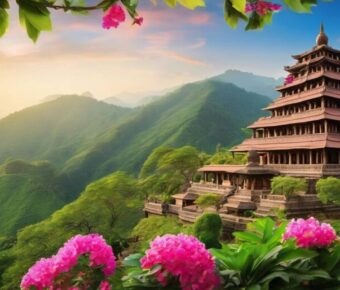
Lake Como vs Lake Garda: 7 Key Differences to Help You Choose Your Perfect Italian Getaway
Italy’s northern lakes offer two stunning destinations that draw travelers year after year. Lake Como and Lake Garda have unique charm, though they serve different vacation styles. Lake Como is known for its exclusive luxury and narrower, more intimate setting with scenically attractive landscapes. At the same time, Lake Garda offers a more laid-back atmosphere with its larger size and dramatic scenery.
When choosing between these Italian gems, consider what you’re looking for in your lake experience. Lake Como wraps you in elegance with its charming towns and celebrity appeal. According to many travelers, Lake Garda, Italy’s largest lake, provides more activity diversity and is less overrun by tourists. The north side of Garda also puts you just an hour’s drive from the magnificent Dolomites.
Both lakes showcase the beauty of northern Italy, but they definitely aren’t identical twins. Como offers that picture-perfect postcard setting, while Garda delivers more variety and easier navigation for exploring multiple towns during your stay.
Contents
- Geographic Overview and Accessibility
- Location in Northern Italy
- Proximity to Major Cities
- Public Transportation Options
- Historical Significance and Culture
- Historical Attractions
- Regional Cuisine and Wine
- Cultural Experiences
- Natural Beauty and Scenery
- Scenic Landmarks
- Panoramic Views
- Botanical Gardens and Olive Groves
- Accommodation and Lodging
- Luxury Villas and Hotels
- Budget-Friendly Options
- Romantic Getaway Spots
- Leisure and Outdoor Activities
- Water Sports and Beaches
- Hiking and Biking Trails
- Family-Friendly Attractions
- Climate and Best Times to Visit
- Seasonal Weather Variations
- Ideal Month Selection
- Tourism Peaks and Off-Season
- Local Experiences and Hidden Gems
- Charming Towns and Villages
- Unique Activities
- Off-the-Beaten-Path Locations
- Frequently Asked Questions
- What distinguishes Lake Como from Lake Garda for family vacations?
- Is Lake Como or Lake Garda preferable for a honeymoon retreat?
- Could you compare the travel experience from Milan to both Lake Como and Lake Garda?
- What factors contribute to the higher costs of visiting Lake Como than Lake Garda?
- Which lake would experts recommend for a truly authentic Italian lake experience?
- How does the accessibility of Lake Como and Lake Garda by train influence travelers’ choices?
- More Travel Guides
Geographic Overview and Accessibility
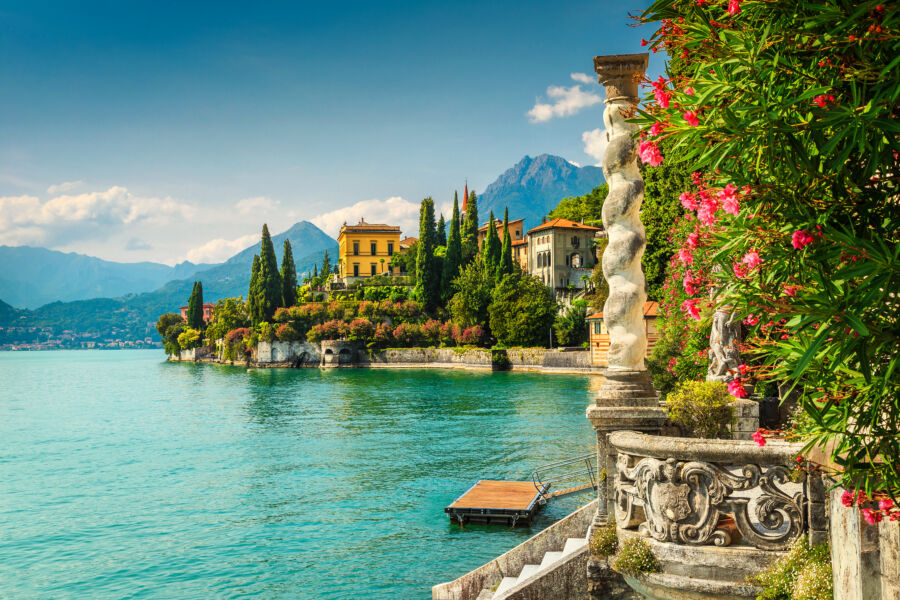
Lake Como and Lake Garda offer stunning landscapes in northern Italy, but they differ significantly in their locations and how easily visitors can reach them. Their proximity to major cities and available transportation options can greatly impact travel planning.
Location in Northern Italy
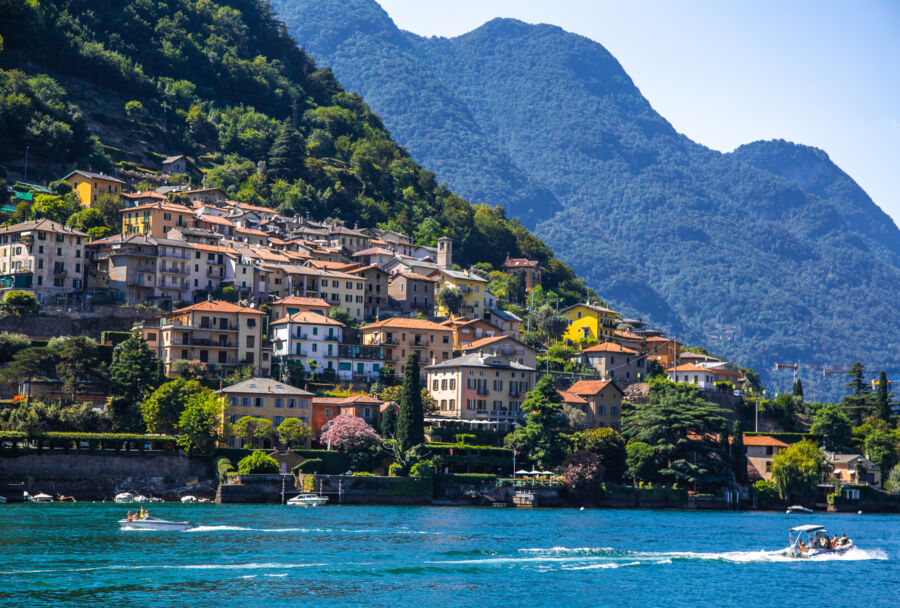
Lake Como is in the Lombardy region. It is shaped like an upside-down “Y” with three branches extending from the town of Bellagio. The lake is surrounded by steep mountains and lush forests, creating a dramatic, intimate setting. The western shore hosts popular towns like Menaggio and Tremezzo, while the eastern shore features Varenna and Lecco.
On the other hand, Lake Garda spans three regions: Lombardy, Veneto, and Trentino. It’s Italy’s largest lake with a more open, expansive feel. The northern part narrows between mountains, while the southern portion widens considerably. The diverse geography creates distinctly different atmospheres around the lake, from the Mediterranean-like southern shores to the Alpine northern end.
Proximity to Major Cities
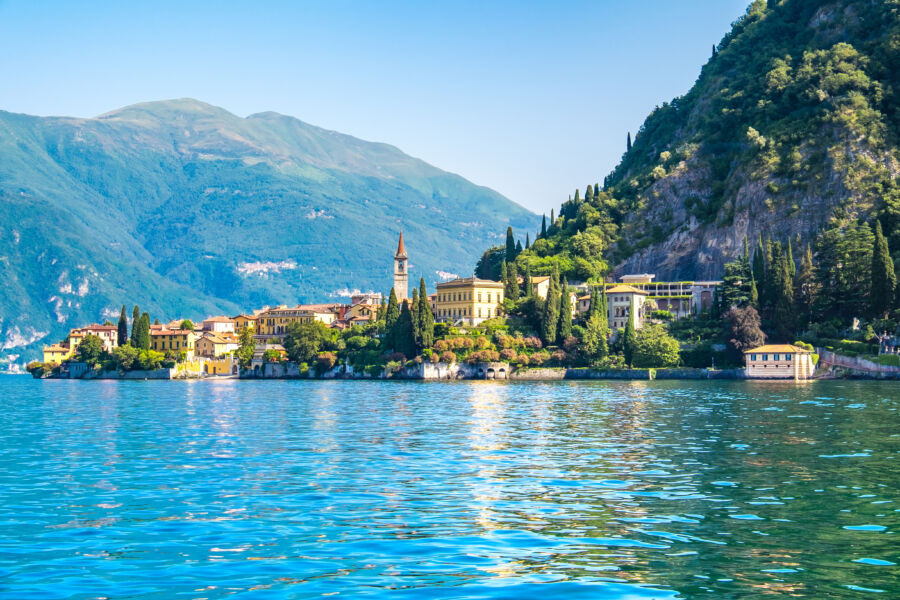
Lake Como benefits from its closeness to Milan, just about 50 minutes away by train or car. This makes it perfect for day trips or short stays from Italy’s fashion capital. Bergamo is also nearby, about an hour’s drive from the lake’s southern end.
Lake Garda enjoys more balanced accessibility from several major cities. It sits between Venice and Milan, with Verona close to its eastern shore. Brescia is convenient to the western side. This central position makes Garda an excellent stop when traveling between Italian regions.
The proximity to Verona Airport is particularly advantageous for Lake Garda visitors, especially those heading to the eastern and southern shores.
Public Transportation Options

Lake Como offers excellent public transport connections. Regular trains run from Milan to Como and Lecco, taking under an hour. Once at the lake, an efficient ferry system connects most lakeside towns, making car-free travel relatively easy.
Lake Garda’s public transportation situation is more complex. While trains reach the southern end at Desenzano and Peschiera, the northern parts aren’t accessible by rail. Visitors must rely on buses or boats to reach towns like Malcesine or Limone. The ferry system is comprehensive but operates less frequently than Como’s, especially in the off-season.
Historical Significance and Culture
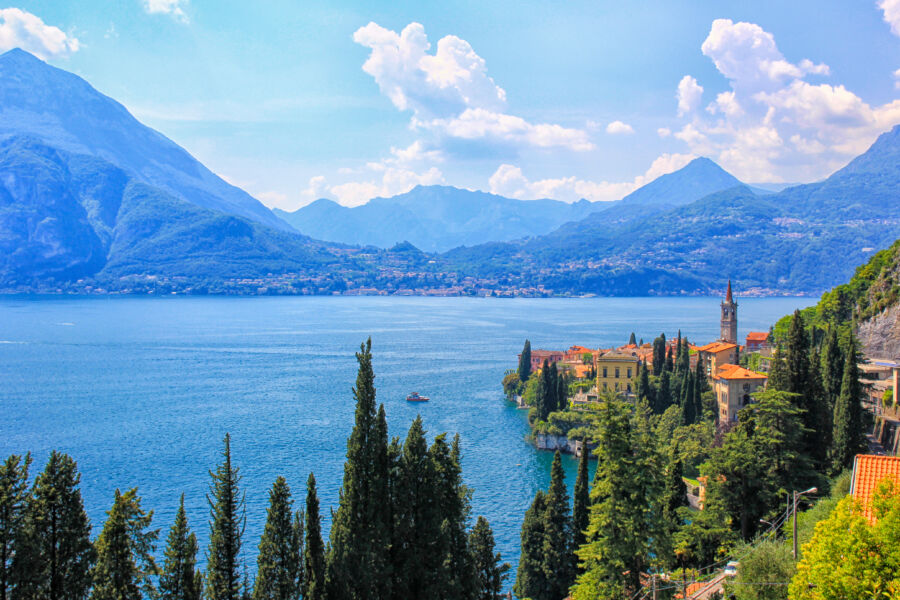
Both lakes boast histories dating back thousands of years, with distinct cultural identities shaped by various civilizations. The areas surrounding Lake Como and Lake Garda have witnessed Roman settlements, medieval conflicts, and Renaissance flourishing that continue to influence their unique traditions, cuisine, and artistic heritage.
Historical Attractions

Lake Garda holds significant historical importance due to its strategic location. The impressive Grotte di Catullo on the Sirmione peninsula contains the largest Roman villa ruins in northern Italy, dating back to the 1st century BCE. The site offers stunning views over the azure waters and provides a glimpse into ancient Roman leisure life.
Medieval castles dot Lake Garda’s shores, with Scaliger Castle in Sirmione being one of the best-preserved fortresses from the 13th century. Its distinctive walls and towers create an impressive silhouette against the lake backdrop.
Lake Como’s historical attractions include Villa Carlotta, its botanical gardens and art collections, and Villa del Balbianello, which has appeared in several films, including Star Wars and James Bond movies. The region’s villas reflect its popularity among aristocrats throughout the centuries.
Regional Cuisine and Wine

Lake Garda’s cuisine blends northern Italian traditions with Mediterranean influences thanks to its unique microclimate. Olive groves thrive here, producing delicate olive oils that perfectly complement local dishes.
The lake is surrounded by vineyards producing distinctive wines like Bardolino and Lugana. Wine tours are popular, offering tastings of these regional specialties alongside spectacular views.
Typical dishes include:
- Pike fish served with polenta
- Bigoli pasta with sardines
- Risotto made with Monte Veronese cheese
Lake Como’s cuisine is more Alpine in character. Hearty polenta dishes are prominently served with game meats or lake fish. The region is known for its risotto con pesce persico (perch risotto) and missoltini (sun-dried shad fish).
Cultural Experiences

Lake Garda offers diverse cultural experiences influenced by its varied history. The annual Aria di Festa in Bardolino celebrates the olive harvest, while opera lovers can enjoy performances at Verona’s Roman Arena, just a short drive from the lake.
Small museums dot the shoreline towns, preserving local traditions and crafts. The Museo dell’Olio d’Oliva in Cisano showcases the area’s olive oil production history with fascinating exhibits on traditional methods.
Lake Como’s cultural scene centers around its magnificent villas and gardens. The area has inspired artists and writers for centuries, including composers like Verdi and Rossini, who found creative inspiration in the lake’s serene beauty.
Both lakes host vibrant seasonal festivals celebrating local traditions through music, food, and historical reenactments. These events give visitors authentic glimpses into Italian culture beyond the typical tourist experience.
Natural Beauty and Scenery

Both Lake Como and Lake Garda offer stunning landscapes that captivate visitors year-round. Each lake boasts unique geographical features that create distinct visual experiences, from dramatic mountain backdrops to charming waterfront villages.
Scenic Landmarks
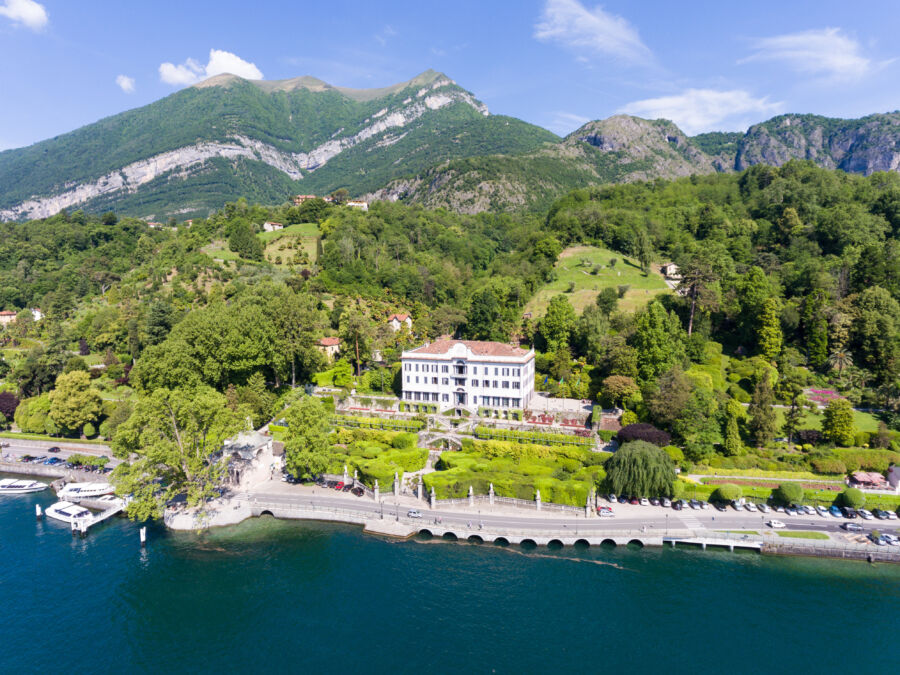
Lake Como’s famous inverted Y-shape creates intimate bays and secluded corners that feel magical and exclusive. Villa Balbianello is perhaps Como’s most iconic landmark, perched on a wooded peninsula with perfectly manicured gardens. This makes it a favorite filming location for movies like Star Wars and James Bond.
Villa Carlotta in Tremezzo showcases remarkable architecture alongside botanical treasures. Its terraced gardens overlook the lake’s narrowest section, creating picture-perfect views that photographers adore.
Lake Garda offers a different drama with its more rugged northern landscapes. The towering mountains that plunge into the water create a fjord-like atmosphere that surprises many first-time visitors. The Rocca di Manerba, a rocky peninsula topped with ancient ruins, provides a stunning natural landmark unique to Garda.
Panoramic Views
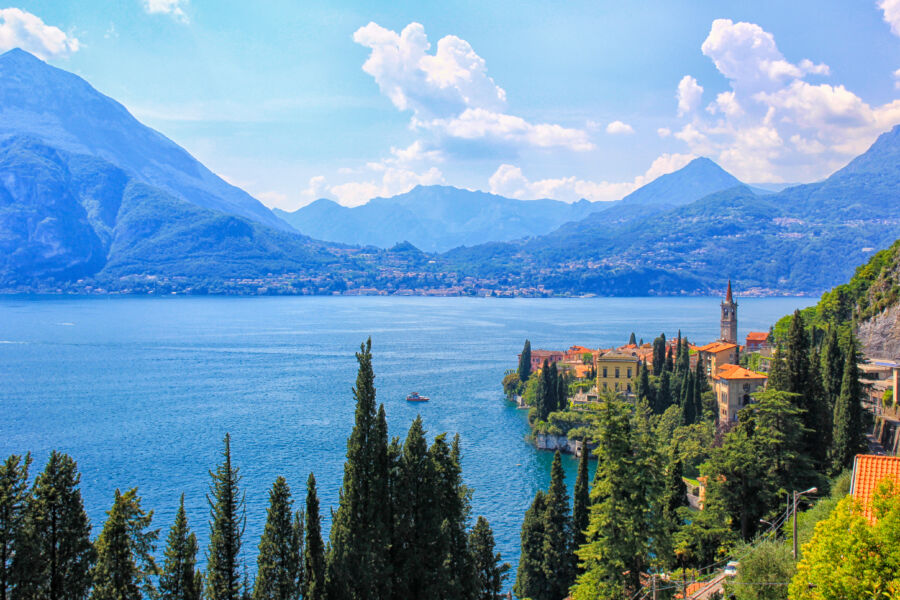
Lake Como’s mid-lake region offers what many consider the most romantic vistas in Italy. From Bellagio’s promontory, visitors can simultaneously gaze across three lake branches. This famous view has been immortalized in countless paintings and photographs.
The ferry crossings between Varenna, Menaggio, and Bellagio provide constantly shifting perspectives of the surrounding Alps, historic villas, and colorful villages that cling to the steep shorelines.
Lake Garda counters with more expansive, open views. The lake’s northern end near Riva del Garda offers dramatic panoramas where vertical cliff faces meet crystal waters. Monte Baldo, accessible by cable car, rewards hikers with breathtaking vistas across the lake and sometimes as far as Venice on clear days.
Botanical Gardens and Olive Groves

Lake Como’s microclimate supports lush gardens filled with exotic plants that shouldn’t typically survive in northern Italy. Villa Monastero’s botanical garden stretches for nearly a mile along the lakefront, featuring rare species from around the world alongside Mediterranean classics.
The western shore of Como, particularly around Lenno, harbors ancient olive groves that produce some of Italy’s northernmost olive oils. These silvery trees create beautiful patterns across the hillsides.
Lake Garda claims Italy’s northernmost olive production, with centuries-old groves dotting the hills around Malcesine and Gargnano. The area’s unique microclimate allows citrus fruits to thrive unusually far north. The limonaia (lemon houses) around Limone sul Garda create distinctive terraced landscapes unlike elsewhere in Europe.
The Heller Garden in Gardone Riviera showcases over 3,000 plant species in a setting that combines botanical interests with artistic installations.
See Related: Lake Como vs Amalfi Coast: Which Italian Paradise Offers the Ultimate Escape?
Accommodation and Lodging

Lake Como and Lake Garda offer diverse accommodations, from opulent villas to wallet-friendly options. Your choice depends on your travel budget and the experience you’re seeking.
Luxury Villas and Hotels
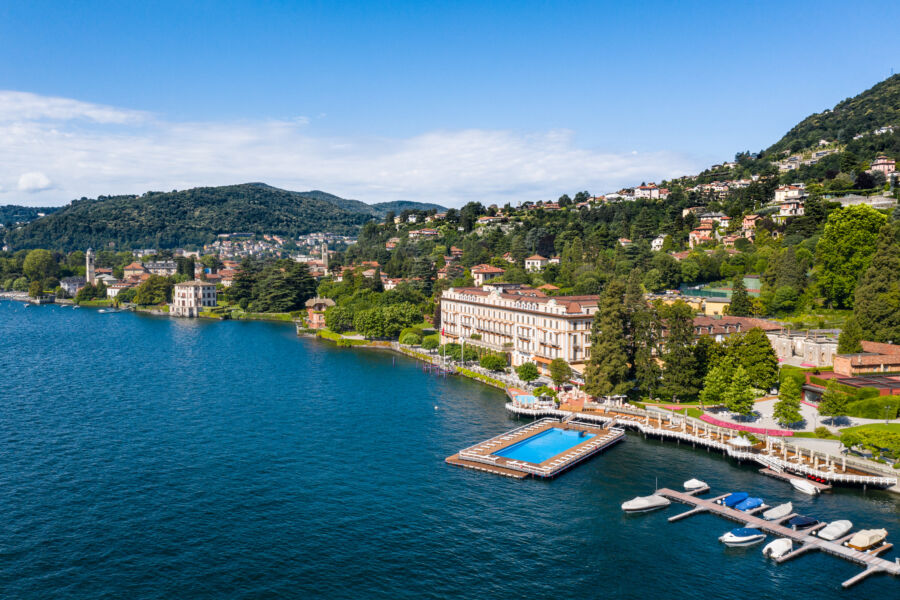
Lake Como excels at luxury accommodation. The lakeside has historic villas converted into five-star hotels offering breathtaking views. Villa d’Este in Cernobbio stands out with its Renaissance architecture and manicured gardens. Grand Hotel Tremezzo features floating pools and rooms with balconies overlooking Bellagio.
Lake Garda offers its luxury brand, though slightly less ostentatious than Como. The Lefay Resort & SPA provides stunning panoramic views coupled with wellness facilities. The Grand Hotel Fasano boasts lakefront opulence with a private beach and classical elegance.
Many celebs own private villas on Lake Como, giving it an exclusive reputation. These properties often feature private docks, infinity pools, and personal staff.
Budget-Friendly Options

Lake Garda wins for travelers watching their wallets. The southern shore towns like Desenzano and Peschiera offer reasonably priced hotels and family-run guesthouses that won’t break the bank.
Camping is popular around Garda, and well-maintained sites like Camping Butterfly provide affordable access to lake views. Many campsites also include swimming pools and restaurants.
Como has budget options, too, but they’re harder to find. Look to towns like Lecco or Colico, further from the fashionable mid-lake area. Small B&Bs and agriturismi (farm stays) in the hills above the lake typically offer better value.
Apartment rentals present good value on both lakes, especially for longer stays or families.
Romantic Getaway Spots

Lake Como excels as a honeymoon destination. The intimate villages of Varenna and Bellagio offer charming boutique hotels perfect for couples. Hotel Villa Cipressi in Varenna features terraced gardens tumbling down to the water.
Lake Garda’s northern end provides a dreamy backdrop for romance. Malcesine’s narrow medieval streets lead to cozy inns with mountain and lake views. The castle-topped peninsula of Sirmione houses thermal spas where couples can unwind together.
Both lakes feature waterfront restaurants with sunset views and private boat tours for intimate experiences. Many hotels offer special romantic packages, including champagne, spa treatments, and private dinners.
Consider boutique properties like Relais Villa Vittoria on Como or Locanda San Vigilio on Garda for ultimate privacy.
Leisure and Outdoor Activities
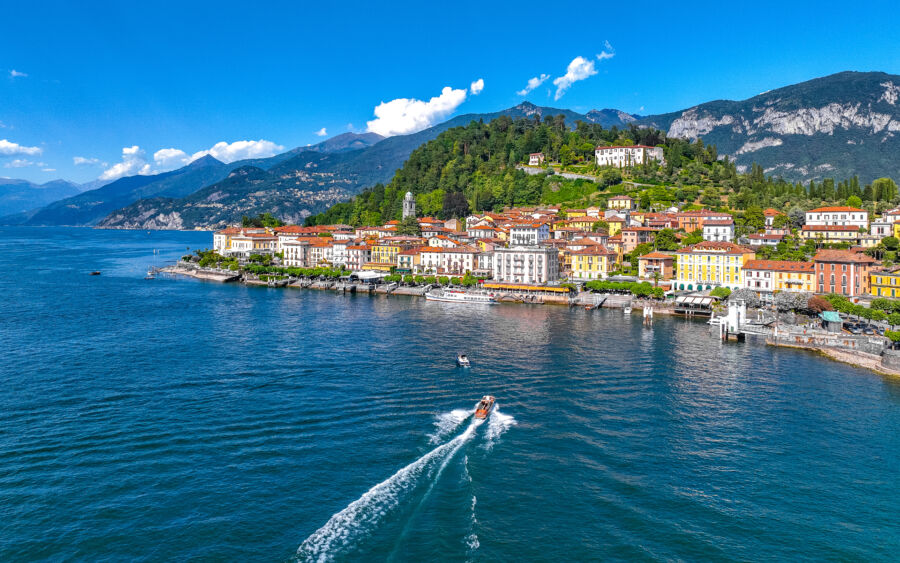
Both Lake Como and Lake Garda offer amazing options for outdoor enthusiasts. These Italian lakes provide different experiences for those seeking adventure, relaxation, or family fun in stunning natural settings.
Water Sports and Beaches

Lake Garda is hands down the best place for water sports enthusiasts. Its reliable winds make it a paradise for sailing, windsurfing, and kitesurfing, especially in the northern areas like Riva del Garda and Torbole. These spots attract international competitions and water sports enthusiasts from around the world.
According to recent reports, Lake Garda offers more swimming options and cleaner water for beach lovers. The southern shore features several family-friendly beaches with shallow entry points. Popular spots include the beaches at Sirmione, Lazise, and Bardolino.
Lake Como has fewer beaches but compensates with elegant lidos (beach clubs) where visitors can swim and sunbathe in style. The water tends to be cooler than Lake Garda’s, and swimming areas are typically smaller and more secluded.
For those interested in guided water experiences, boat tours, and water activities are available on both lakes.
Hiking and Biking Trails

Both lakes are surrounded by stunning mountains that offer excellent hiking and biking opportunities but with different characteristics.
Lake Como’s steep mountains provide challenging hikes with breathtaking views. The Greenway del Lago di Como is a moderate 10km path connecting lakeside villages. More advanced hikers enjoy the Sentiero del Viandante (Wayfarer’s Path) along the eastern shore.
Lake Garda boasts more diverse biking options, especially in the north, where mountain biking trails abound. The relatively flat southern shore is perfect for casual cyclists. Mount Baldo, accessible by cable car, offers spectacular hiking with panoramic lake views.
Notable trails include:
- Lake Como: Pigra to Colonno trail, Monte San Primo
- Lake Garda: Ponale Path, Rocca di Manerba trails
The terrain around Lake Garda tends to be more accessible for beginners, while Como attracts more experienced hikers.
Family-Friendly Attractions

Lake Garda offers numerous attractions for family entertainment. Gardaland, Italy’s largest theme park, offers thrilling rides and entertainment for all ages. Nearby, the Caneva Aquapark provides water slides and pools that are perfect for hot summer days.
Parco Natura Viva, a combined safari park and zoo near the eastern shore, delights animal lovers. Families also enjoy the Jungle Adventure Park, which features ziplines and rope courses set among the trees.
Lake Como offers fewer commercial attractions but compensates with child-friendly villas and gardens. Villa Carlotta and Villa Balbianello feature extensive grounds where children can explore. The Como-Brunate funicular railway provides excitement and stunning views.
Both lakes have picturesque towns with gelaterias, playgrounds, and gentle lakeside promenades perfect for family strolls. Lake Garda generally offers more structured entertainment options, while Como provides a more relaxed, natural experience.
See Related: Unforgettable Religious Tours in Italy: Transform Your Faith Journey in the Jubilee Year
Climate and Best Times to Visit

The Italian lakes have distinctive weather patterns that influence when you should plan your visit. Lake Garda tends to be slightly warmer than Lake Como, though both share similar seasonal patterns that affect tourism and activities.
Seasonal Weather Variations

Both lakes enjoy a mild Mediterranean climate but with some notable differences. Lake Garda typically runs a few degrees warmer than Lake Como due to its more southern position. This small temperature gap can make a difference in early spring or late fall.
Summers (June-August) bring warm temperatures ranging from 75-85°F (24-29°C) at both lakes. During this time, the water is perfect for swimming and water sports.
Winters are relatively mild compared to northern Europe, with temperatures hovering around 40-50°F (4-10°C). Lake Como tends to be a bit rainier year-round than Lake Garda.
Spring and fall bring pleasant temperatures between 55-70°F (13-21°C), with colorful landscapes and fewer tourists than summer months.
Ideal Month Selection
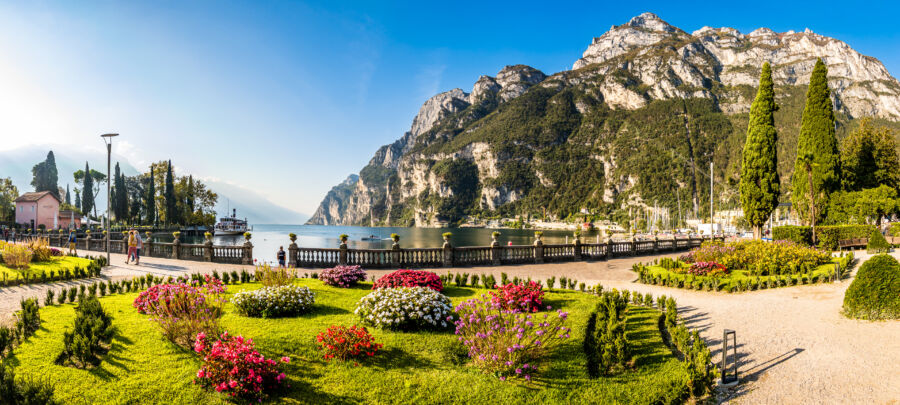
April through June and September through October offer both lakes the best balance of comfortable weather and manageable crowds. These shoulder seasons provide warm days perfect for sightseeing and outdoor dining.
May has blossoming gardens and pleasant temperatures averaging 65-75°F (18-24°C). The water might still be chilly for swimming but perfect for boating.
September and early October maintain summer-like warmth while avoiding July and August’s heat and crowds. The lakes remain warm enough for swimming while the surrounding hillsides begin to show fall colors.
Be aware that April can be quite rainy, especially at Lake Como. Pack accordingly if visiting during this time!
Tourism Peaks and Off-Season

The high season runs from mid-June through mid-September when tourists flood both lakes. Hotels charge premium rates, restaurants require reservations, and popular attractions draw long lines.
If you’re seeking tranquility, consider visiting during the off-season (late September to early June). During these months, you’ll experience a more authentic atmosphere and significantly reduced prices.
Lake Garda maintains a livelier vibe year-round than the more serene Lake Como. Garda’s larger towns keep a steady activity pulse even in slower months.
Winter visits (November-March) offer a uniquely peaceful experience. While some restaurants and attractions close seasonally, you’ll find charming Christmas markets and stunning misty lake views without summer crowds.
Day trips are easier to plan during off-peak times, with less traffic on the narrow lakeside roads and more parking availability.
Local Experiences and Hidden Gems
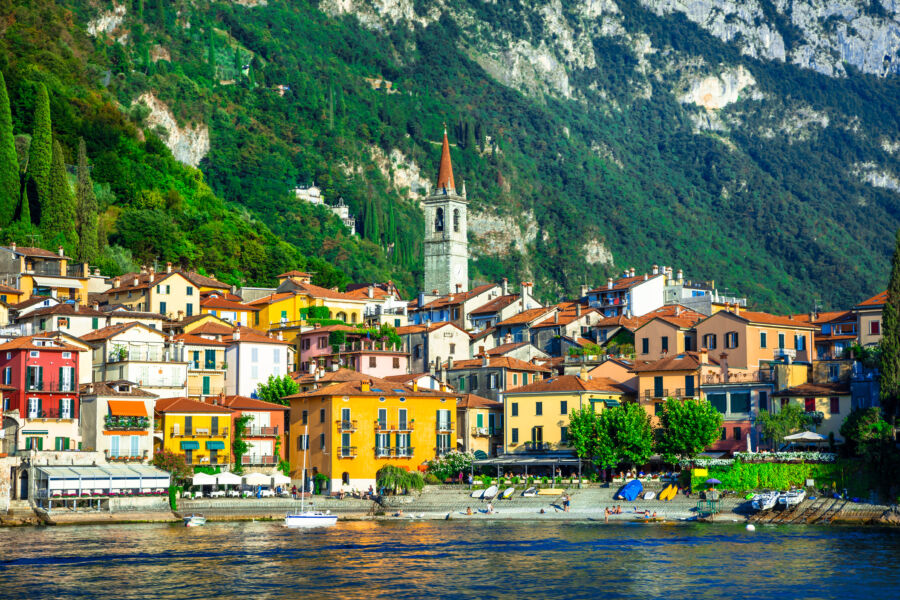
Lake Como and Lake Garda offer enchanting experiences beyond the typical tourist attractions. These Italian lakes hide charming villages, unique activities, and secluded spots that reveal the authentic character of these beautiful regions.
Charming Towns and Villages

Lake Como boasts several picturesque towns that feel like stepping into a postcard. Bellagio, often called the “Pearl of Lake Como,” features narrow cobblestone streets with colorful buildings and elegant shops. The waterfront promenade offers stunning views across the lake’s three branches.
Varenna charms visitors with its romantic waterfront and peaceful atmosphere. This fishing village has fewer tourists than Bellagio but offers equally beautiful views and authentic Italian character.
On Lake Garda, Malcesine captivates with its medieval castle perched on rocky cliffs. The town’s narrow winding streets open to surprising lake views, and hidden piazzas are perfect for coffee.
Riva del Garda combines Italian and Austrian influences in its architecture and cuisine. The town’s beautiful harbor, backed by impressive mountains, creates a dramatic setting for evening strolls.
Unique Activities

Lake Garda excels in outdoor adventures due to its consistent winds. Sailing experiences are popular, with numerous schools offering lessons for beginners and rentals for experienced sailors.
Climbing enthusiasts flock to the rocky cliffs surrounding Garda, particularly near Arco. These limestone faces provide routes for all skill levels, with spectacular lake views as your reward.
Lake Como offers more refined experiences. Wine-tasting tours in the surrounding hills introduce visitors to local vintages that are not widely exported. Many vineyards offer intimate tastings with spectacular lake views.
Both lakes have hidden hiking trails leading to panoramic viewpoints. Lake Garda’s northern region attracts paragliding enthusiasts who launch from mountain peaks to soar over the blue waters below.
Off-the-Beaten-Path Locations

Around Lake Como, the village of Menaggio provides a less crowded base with authentic local life. Its lakefront promenade and botanical gardens offer peaceful alternatives to busier towns.
The western shore of Como features villages rarely visited by tourists. Places like Argegno and Colonno maintain their traditional character with family-run restaurants serving dishes you won’t find on tourist menus.
Lake Garda’s eastern shore hides small villages where time seems to stand still. Torri del Benaco maintains its fishing traditions and medieval atmosphere without the crowds of larger towns.
For nightlife beyond tourist spots, locals head to Desenzano del Garda. This vibrant town offers lakeside bars and clubs where Italians outnumber visitors, especially during shoulder seasons.
See Related: Italian Fashion: What to Wear in Italy (Complete Guide)
Frequently Asked Questions

These common questions address key differences between Lake Como and Lake Garda, helping you decide which Italian lake destination suits your travel needs better.
What distinguishes Lake Como from Lake Garda for family vacations?
Lake Garda offers more family-friendly activities and attractions. Its southern shore features several theme parks, including Gardaland, making it ideal for families with children.
Lake Como focuses more on luxury experiences and scenic beauty. While beautiful, it provides fewer dedicated attractions for kids.
Weather is also a factor. Lake Garda tends to have warmer temperatures, especially in the southern areas, making it more suitable for swimming and water activities with children.
Is Lake Como or Lake Garda preferable for a honeymoon retreat?
Lake Como excels as a honeymoon destination with its romantic atmosphere and exclusive luxury. Many celebrities have homes here, adding to its glamorous reputation.
The lake’s intimate setting, surrounded by stunning mountains and dotted with historic villas, creates perfect backdrops for couples. Towns like Bellagio and Varenna offer charming narrow streets ideal for romantic walks.
Lake Garda provides a more laid-back honeymoon experience. It’s less exclusive but offers more varied activities if you prefer an active honeymoon with sightseeing opportunities.
Could you compare the travel experience from Milan to both Lake Como and Lake Garda?
Lake Como is significantly closer to Milan, with Como town just about an hour away by train or car. This makes it perfect for day trips or weekend getaways from the city.
Train connections to Como are frequent and convenient, with direct routes from Milan Central Station.
Lake Garda requires a longer journey from Milan, typically around 1.5-2 hours by car to reach the southern shore. The eastern shore is accessible via train to Desenzano or Peschiera but requires more planning than a Como trip.
What factors contribute to the higher costs of visiting Lake Como than Lake Garda?
Lake Como’s association with luxury and exclusivity drives up prices. The mid-lake region, especially towns like Bellagio, commands premium rates for accommodations and dining.
Celebrity presence and high-end tourism have transformed Como into a luxury destination. Many hotels cater to wealthy travelers, offering fewer budget options.
Lake Garda, being larger, has more varied price points. The southern part offers many family-oriented accommodations and restaurants with more reasonable prices.
Which lake would experts recommend for a truly authentic Italian lake experience?
Both lakes offer authentic experiences but in different ways. Lake Como provides a glimpse into historic Italian luxury with its grand villas and refined atmosphere.
The smaller towns around Como often preserve traditional ways of life away from tourist centers. Local festivals and markets showcase authentic culture.
Lake Garda offers more diversity in authentic experiences. The northern part resembles the Alpine, while the southern region embodies Mediterranean Italy with olive groves and vineyards.
How does the accessibility of Lake Como and Lake Garda by train influence travelers’ choices?
Lake Como’s excellent train connections from Milan make it ideal for travelers without cars. Como Town and Varenna have direct stations, allowing easy access to key areas.
The ferry system on Lake Como connects seamlessly with train stations, creating an integrated public transport network that’s easy for tourists to navigate.
On the other hand, Lake Garda’s train accessibility varies by location. The southern and eastern shores have good connections (Desenzano and Peschiera stations), but northern areas require buses or boats after arriving by train.


